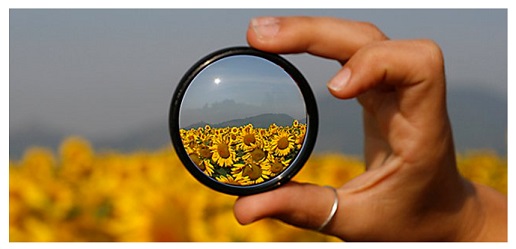 Give it to me Raw
Give it to me Raw
Something has happened to social media over the summer months with the launches of Periscope, Meerkat and the massive adoption of Snapchat by anyone under 25: “Raw media” or rather media that is ‘in the moment’ and devoid of ‘production’ is now the hottest thing in social today.
 I’ve talked previously in my post on Snapchat about how people are moving away from the manicured curation of Facebook to these new channels, and they seem to be multiplying – Periscope is gaining traction and now there’s a new platform called Beme appearing on the ‘raw’ peripherary.
I’ve talked previously in my post on Snapchat about how people are moving away from the manicured curation of Facebook to these new channels, and they seem to be multiplying – Periscope is gaining traction and now there’s a new platform called Beme appearing on the ‘raw’ peripherary.
So, what do they have in common? Each platform is about passing along the moment, in an unstructured way. They’re realer, grittier -‘Rawer.’ They are unencumbered by production, scripts and filters. As someone who’s just turned 40 years of age the very idea of no filters terrifies me but having talked to my teenage step-kids the immediacy of these platforms combined with the intimacy and ‘raw’ appeal is what people of their generation like. They appreciate being ‘in the moment’ and that makes sense. Which person have you met under 25 that doesn’t like immediacy?
Even here in the Middle East I am witnessing a small but important change in consumer behavior. People want to see honest communication. Transparency has always been a consumer concern but millennials in MENA and beyond expect and demand brands and companies to deliver immediate and intimate experiences.
Authenticity and trust
The desire for authenticity isn’t a complete surprise. We know that
 nine out of ten millennials neither like nor trust advertising. More than half say they’re more likely to watch a video on YouTube than on traditional TV. Over half assume cleaning and beauty ads are Photoshopped. In the age of authenticity and values, veracity counts. So how can we as communicators persuade, grab attention, and create pervasive communication if our audience doesn’t trust us?
nine out of ten millennials neither like nor trust advertising. More than half say they’re more likely to watch a video on YouTube than on traditional TV. Over half assume cleaning and beauty ads are Photoshopped. In the age of authenticity and values, veracity counts. So how can we as communicators persuade, grab attention, and create pervasive communication if our audience doesn’t trust us?
Well it turns out that if you want to be where the future of your brands are, and create experiences that your audience wants to experience, and gain back their trust, you need to ‘get raw’ with your audience and embrace new platforms – and there is a big pay off for brands that take the risk and go where no brand has gone before.
The Bottom Line
From a business POV, the numbers can no longer be ignored, Snapchat is on track to generate $US50 million in revenue in 2015, Re/code’s Kurt Wagner reports. The platform already has 100 million daily users, and recently launched its first revenue product — Live Stories, which has become one of Snapchat’s most popular features. The music festival Coachella, for example, attracted more than 40 million unique viewers. That’s HUGE by anyone’s book.
Snapchat charges marketers two cents per view on a 10-second ad that shows up on one of the Live Stories content pieces, according to an earlier report in Re/code. Since Live Stories can attract about 20 million people on average in a 24-hour span, this means the ad space on a 20 million view story can be worth about $US400,000. This is huge. All Snapchat ads are also arranged vertically so they fill the entire screen on smartphones, which is a big theme on Snapchat. There is no annoying ‘pre-roll,’ which feels outdated, irritating at best and irrelevant.
Although there is speculation that the cost of Snapchat advertising is too rich for many regional brands, I see many brands wanting to become relevant to the younger, more local population HAVING to invest here. Industries like telecoms, travel, banking and even high-end fashion labels have to recognize the significance this platform plays in driving brand affinity.
Are you ready to try it?
Some brands in the region are experimenting. I see plenty of plans to launch Snapchat channels from major brands over the next six months in the pipeline. Will this help drive business and acquire new customers? That’s yet to be seen but in order to successfully connect and have a relevant presence where many eyeballs are focused, Snapchat seems like a sensible investment to me.
Relatively new platforms, Periscope and Meerkat caused a huge sensation when they first launched earlier this year. Why? Because the platforms make it simple to share your brand’s stories with live video. Brands can now easily create a moment, or be a part of one, and broadcast it to the world. Better yet, Periscope seamlessly integrates with Twitter to share with all of your followers in real time.
Periscope and the events industry
There are people that are really connecting with the hearts and minds of people in the region. If you haven’t heard of Alex Pettitt you probably will soon. Alex is a Periscoper who has 30,000 followers (you can view his website here). He has over 15 million hearts on Periscope. Why? Because he’s consistent: every day he shares tips, hints and secrets about Periscope, and broadcasts at around the same time to catch a global audience at 1pm and 10pm. He has collaborated with Sky Sports F1 and the new FIA Formula E championship. The content he created combined with the platform perfectly illustrates the power of Perisciope to get “behind the scenes”, to live stream ‘raw content’ and connect instantly with an eager audience.
I haven’t seen much take up with Periscope here in the region yet but key events season is around the corner in September, and I am sure that savvy brands coming to the region for the likes of Gitex, Gitex Shopper and Fashion Forward will be using this platform for sure.
The Shake Shack Revolution
Brands that understand the big wave of consumer focus on transparency and authenticity, are cashing in big. Just look at Shake Shack! In terms of pure numbers, Shake Shack doesn’t have the largest following on most of these social platforms, and it has a relatively tiny ad budget. Case in point: in 2013, Shake Shack spent only $800,000 in advertising and promotions, but it was able to use its budget to maximize reach by really understanding their core audience, and speaking to them in a native fashion – resulting in huge reach for a small spend. Shake Shack only has 40 stores, compared to the thousands that both McDonald’s and Taco Bell have, but they’re able to do so much more with so much less.
According to Goldman Sachs, similar to Chipotle, Shake Shack has a “unique resonance with Millennials,” in part due to a strong social-media presence. The burger chain has racked up 155,000 followers on Instagram, in spite of only having 63 locations, half of which are in the U.S. For comparison, McDonald’s has more followers — 491,000 — but also has way more locations — 36,000, of which more than 14,000 are in the U.S.
Using Goldman Sachs’s measure of followers by system sales (i.e. all outlets’ total sales figures) in North America, McDonald’s has 11 followers per systems sales, while Shake Shack has a stunning 1,808.
Using the same followers by system sales measurement, Goldman additionally found that Shack Shake is more successful than competitors on Vine — though Taco Bell is a close second, as both are near the 20 followers per North American system sales mark
Part of what makes Shake Shack successful is that they’re not afraid to take risks and let the audience curate content online and offline. New ideas like “Burger Beats,” invites musicians to submit their music for a chance to be played at more than 70 Shake Shack locations in nine countries across the world – and it’s been wildly successful.
Along the same lines, Shake Shack actively encourages their customers to share what they’d share in person with a Shake Shack team member on social and doesn’t overly curate what they say.
Think Raw
So what’s the take-away for anyone in marketing and communications today? Well, have a look at these more ‘real’ platforms, plan to experiment with them on one particular activation or campaign, measure the results and see whether they’re worth investing on a much longer more strategic basis. Here in the Middle East, those that move first gain really big traction and I think Snapchat and Periscope, in particular, will become increasingly important in the delivery of meaningful content and advertising type campaigns to the audiences that matter – people under 25. More than 28% of the population of the Middle East is aged between 15 and 29. Representing over 108 million young people, this is the largest number of young people to transition to adulthood in the region’s history. (Source www.shababinclusion.org/section/about/facts)
As always I’d love to hear your thoughts and feedback on my point of view. Have a great day guys!
Authored by: Ema Linaker, Regional Director, Holler/Leo Burnett

